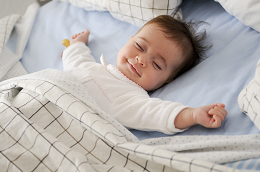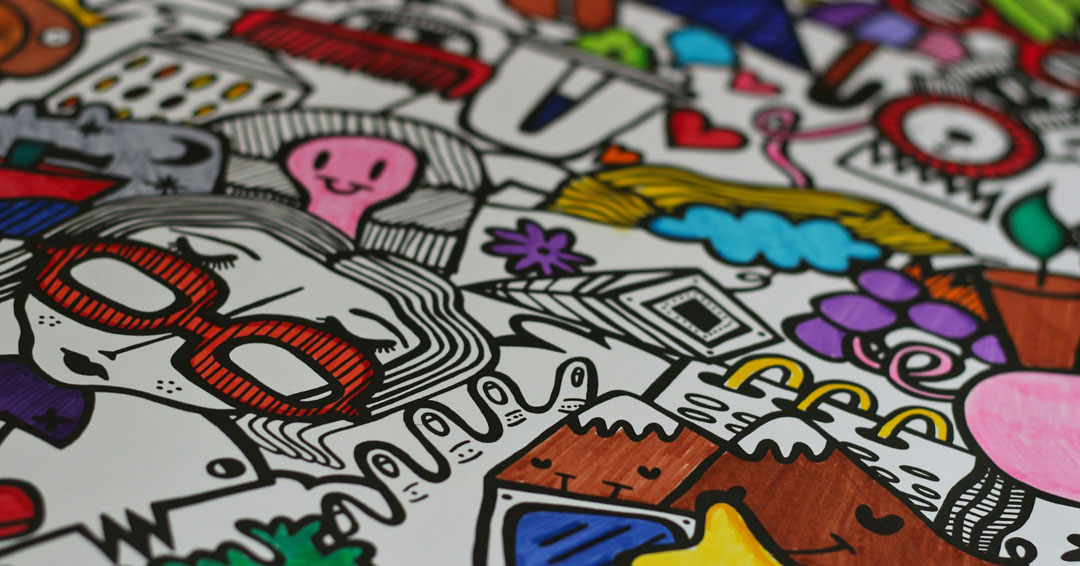How to Train Baby to Sleep Crib: Your baby sleeping through the night

How to make the baby sleep in the crib can be a learning process, but with patience, consistency, and a careful approach, it is possible to achieve this goal.
A new family member brings joy and challenges. One significant challenge is setting a healthy sleep routine for the baby. The baby's bedtime is crucial not only for their development but also for the well-being of the parents.
The Sleep Foundation says that 10% to 15% of people have postpartum depression in the year after giving birth. Not getting enough sleep greatly affects this number.
A good night's sleep is essential for everyone in the household to recharge their energy. Creating a good nighttime routine and finding the best time to put the baby in the crib can feel hard at first. However, with the right guidance and a little patience, this process can become simpler and more peaceful.
Important to notice when the baby is ready to sleep. You should also prepare the environment to ensure safe and comfortable sleep.
When to know your baby is ready for crib training
Knowing when your baby is ready for crib training depends on key developmental milestones and behavioral cues. Most babies are ready around 4 to 6 months old, when their sleep cycles mature, and they can self-soothe more effectively.
Signs of readiness include:
-
Outgrowing the bassinet
-
Showing increased mobility (like rolling over) or frequently waking up because of limited space.
-
Your baby is starting to fall asleep on their own or feels comfortable in their crib during naps. These signs show they are ready for this change.
Understanding the baby's sleep cues
A baby's ability to sleep is essential to their healthy development as it impacts their physical, mental, and emotional maturation. It is a fundamental procedure for their wellbeing and goes beyond simply getting enough sleep.
It is important to recognize when the baby is ready to sleep. This helps prevent overstimulation and makes it easier for them to fall asleep. Some of the most common signs include:

-
Rubbing the eyes.
-
Awning.
-
Becoming fidgety or irritable.
-
Losing interest in toys and activities.
-
Weak sucking is one of the common cues of a sleepy baby.
-
Eyes less focused.
-
Smile less than usual.
Wake windows by age
A baby's sleep window refers to the period between naps when the baby is awake and alert. Identifying this window is essential to ensuring your baby gets adequate rest, promoting their physical and cognitive development.
Understanding the natural sleep cycle for each age is important. This helps you know when to put your baby to sleep and when to keep them awake.
👶 Age |
🕘 Baby wake window |
Newborn |
60-90 minutes 75-95 minutes |
3 months old |
95-120 minutes |
4 months old |
2,5-3 hours |
5 months old |
3-4 hours |
6 months old |
4-5 hours |
Here's some more about how long your baby can go in between naps and sleep based on her age.
Gradual Transition to the Crib
Transitioning the baby to sleep in the crib can be challenging, but some practical tips can make this process easier:

-
Start by placing the baby in the crib for naps during the day, so they get used to the environment.
-
Use a comfort item, such as a soft cloth or a plush toy, to help the baby feel more secure.
-
Stay close to the crib for the first few minutes after putting the baby to sleep to soothe them.
Items that can help your baby during the crib transition:
-
Use Baby Oil to help baby to relax
-
A Baby Night Light provides comfort to your baby
-
Sleep Sacks
-
White Noise
-
Baby Swaddle
Key Techniques
|
Sleep training a baby who stands in their crib
When a child learns a new skill, they want to practice it all the time, even during sleep. Something they can't control often causes them to stand up in the crib and cry because they can't get down by themselves. This can disrupt their sleep, to the point of waking up at night and not being able to control the impulse to stand up.
If your child has been doing this for a while, it may not be a new skill. They might be seeking attention, wanting company, or adjusting to a routine. They may still not be ready to sleep when placed in the crib.
 Tips:
Tips:
-
-
Practice 'sitting'. Place your baby supported on the sofa and leave a toy on the floor, so they have to bend their knees to reach the toy.
-
Teach your child how to sleep. When the baby learns to fall asleep, they will do so after they get used to standing up. Once they know how to sit and lie down, falling asleep will come easily.
-
Review the routine, rituals, and sleep windows. A small change might help with the child's relaxation.
For a child to sleep well, they need a good routine. Relaxing sleep rituals are also important. Sleep autonomy at the start of the night helps too.
-
Baby Bedtime Routine Chart
Creating a sleep routine for the baby is a process that goes beyond simply choosing a time. It involves consistency, observation, affection, and daily adjustments, always respecting your child's timing and individuality. Below, you will find a detailed and effective step-by-step guide to building a routine that truly works, promoting more peaceful nights for the whole family.
 The importance of the baby's routine for a good night's sleep: Babies need predictability. Having consistent schedules for activities such as sleeping, eating, and playing makes them feel safer and more comfortable. (Image: https://runjumpscrap.com/2020/02/my-babys-bedtime-routine-to-get-them-to-sleep/)
The importance of the baby's routine for a good night's sleep: Babies need predictability. Having consistent schedules for activities such as sleeping, eating, and playing makes them feel safer and more comfortable. (Image: https://runjumpscrap.com/2020/02/my-babys-bedtime-routine-to-get-them-to-sleep/)
Have you tried everything and your baby still not sleeping thought the night?
Sign up to receive our eBook and get more tips for your baby's sleep.

|
You may also be interested in… 9 Month Old Wake Windows: Ideal Length and Better Baby Sleep |


